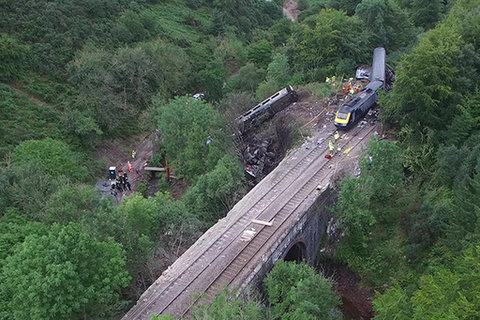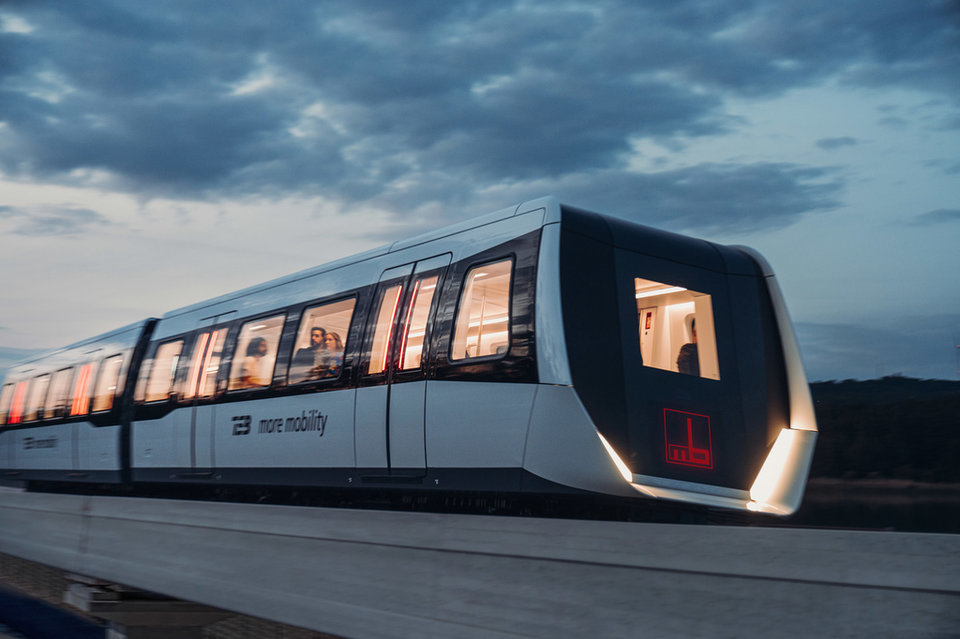All images: Max Bögl
Q&A | Technology
Transport System Bögl: bringing driverless maglev trains to urban environments
Construction company Max Bögl’s maglev system for driverless trains has been given a green light by the German Federal Authority. Ilaria Grasso Macola speaks to Max Bögl product manager Andreas Rau to find out what has happened since the project’s inception in 2010 and what the future holds.
In the last few years, urbanisation has emerged as one of the biggest challenges of our times. According to projected data provided by the UN’s medium fertility scenario, the global population will grow from 7.6 billion in 2018 to 9.8 by 2050, with almost 7 billion people living in urban areas.
The rise of urban populations will raise challenges not only in terms of resources and pollution levels but also in terms of mobility. In the last few years, transport experts have been looking at public transport solutions that will be easily integrated into the urban landscapes of tomorrow.
One such company, the German construction giant Max Bögl, has been working on Transport System Bögl (TSB) – a maglev system for driverless trains – for the last ten years.
In August, the project received the green light from the German Federal Authority, which certified that the train’s core components and the TSB’s track system complied with requirements and were eligible for approval.
With approval procedures underway in Germany and other countries such as China, Max Bögl product manager Andreas Rau explains the project’s journey up to this point and what maglev systems will mean for the future of urban mobility.

Aerial view of the derailment. Image: UK Government
Max Bögl product manager Andreas Rau.

Ilaria Grasso Macola (IGM): When did Max Bögl start developing the TSB?
Andreas Rau (AR): The Max Bögl Group has been involved in magnetic train technology for over 20 years, focusing at the beginning on track systems for the high-speed maglev train Transrapid.
The development of the public transport magnetic railway system TSB began in 2010 and has now completed more than 130,000 shuttle runs on its own test track in [the German municipality of] Sengenthal, travelling more than 85,000km in fully automatic operation.
When things did start to pick up, when the lockdown was relaxed, the trains were fantastic
What was the rationale behind the project?
Drawing from the experience of developing the Transrapid’s guideway structure, we recognised that is very important to handle the intersections between each component of such a system.
The company has therefore decided to develop its own solution for urban applications out of one source, with the result being a very efficient and competitive infrastructure.
How does the TSB work?
While the Transrapid is optimally designed for maximum-speed traffic on long-distance routes, the TSB is optimised for local transport. Both systems differ fundamentally.
With the TSB, the chassis and its active parts, such as the power electronics, are located within the track, encapsulated under 20cm-thick reinforced concrete. This minimises noise emissions, among other things.
The drive system is located within the vehicle, allowing short train headway times of only 80 seconds while the track is completely passive, allowing for track costs to be significantly reduced.

Image: MaxBögl
Since a large part of the systems required for long-distance travel can be eliminated in local transport, the vehicle is lighter and has a greater payload.
The TSB shows its true strengths when high passenger flows must be managed very quietly, with high reliability and short implementation times. Compared with conventional systems, the TSB avoids high, concentrated loads at the contact point between wheel and rail.
The TSB distributes loads evenly on the track without contact, making it unbeatably quiet and low in vibration, and requiring much smaller structures for the track. This saves resources, costs and implementation time, and also provides aesthetic advantages.
Has the Covid-19 pandemic had an impact on the project?
Logistics to our demonstration track in China were delayed, but we didn’t recognise any impacts during construction of the vehicles or the guideway since almost every part of the system is produced by partners in Germany, Switzerland, Austria and England.
What will it mean for Max Bögl to obtain China’s approval of the TSB?
Among the international markets, China is one of those with the greatest potential for the TSB.
In its five-year plan, the Beijing Government has committed to commissioning local transport projects with a total route length of 3,000km. In addition to fast growth, China is a competitive but very open-minded market for new technologies and has a large appetite for investment.
That’s why we are working with our local partner, the company Xinzhu, which is familiar with these unique conditions and can optimally represent the TSB.
Let’s talk about the future. In your opinion what will the introduction of maglev systems mean for cities?
There is a demand for a low-emission, flexible transit solution like never before, due to the fact that cities are growing and the megatrend of urbanisation tightens the availability of space.
So there is a high demand for public transit with its high capacities as the backbone of urban mobility while providing the opportunity for fast implementation. The energy consumption of the system is comparable to a conventional system like trams or metros, considering different horizontal and vertical alignments, [as well as] distances between stations and schedules.
[It is more important] to increase the occupancy of the vehicles by enabling flexible adjustments of headways, and that is the reason why we developed the system from the beginning as a fully automated solution.
Where do you see the railway industry going in the medium to long-term future?
Automation will play a very important role, as will the ability to speed up construction and implementation times.
We believe that, in addition to ground level or underground transport, elevated transport can be a good solution offering the same capacities and advantages of underground transportation.
It requires rail systems that are very quiet and infrastructure with a slim and aesthetic design for integration into urban spaces. For long-distance traffic, rail-guided systems will be very important for environmentally friendly mobility in leisure and business traffic as an alternative for air traffic.